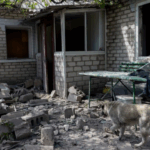Heavy rainfall in central Japan has led to devastating floods and landslides, resulting in one confirmed death and at least six people reported missing in the Noto Peninsula region, which is still recovering from a significant earthquake earlier this year.
The downpour has transformed rivers into muddy torrents in Anamizu, a city grappling with the aftermath of the magnitude-7.5 earthquake that struck on January 1, claiming at least 318 lives. The Japan Meteorological Agency (JMA) issued an emergency warning, classifying the rains as “unprecedented” and urging tens of thousands of residents to evacuate.
Landslides have obstructed roads, and widespread flooding has affected homes, including eight temporary housing complexes in Wajima and Suzu, which are still housing victims from the earlier earthquake. Prime Minister Fumio Kishida emphasized the government’s commitment to disaster management, stating that saving lives is the top priority.
In the Ishikawa region, military personnel have joined local rescue teams to assist with recovery efforts. Approximately 6,000 households are without power, and an unknown number lack running water, according to regional government officials.
In Anamizu, the heavy rain continued to batter quake-damaged buildings, with remnants of the earthquake still visible, including toppled stone columns of a shrine. Local residents have expressed concern over the flooding, with 74-year-old Hideaki Sato remarking, “My house was flattened completely in the quake. If this floods, it would be a real problem.”
The rainfall in Wajima reached over 120 millimeters per hour on Saturday morning, marking the heaviest precipitation since record-keeping began in 1929. Footage from NHK showed entire streets submerged, adding to the destruction already wrought by the New Year’s earthquake.
As of Sunday morning, the fire and disaster management agency reported one fatality, with three individuals missing and two others suffering serious injuries. At least a dozen rivers have overflowed, with reports that two of the missing were swept away by strong currents. Three additional workers from the land ministry, who were restoring a road in Wajima, are also unaccounted for.
Evacuation orders were issued for approximately 75,000 residents across municipalities in Ishikawa, including Wajima, Suzu, and Noto town. An additional 16,800 residents in the nearby Niigata and Yamagata prefectures were also urged to evacuate as the situation remains critical.

















